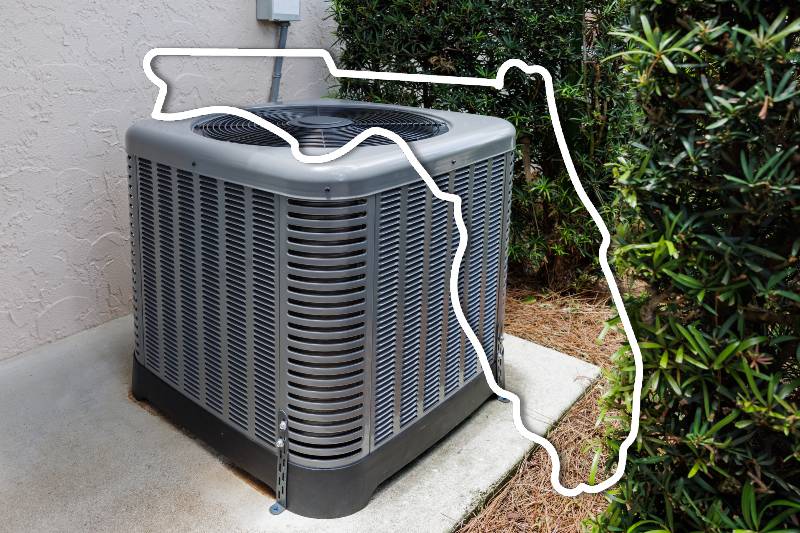Buying your first home is exciting, but it’s natural to feel a little overwhelmed. You may find yourself wondering, “Should I buy a house now or wait?” or “What mistakes should I avoid as a first-time home buyer?” If you have these questions, you’ve come to the right place! This article provides the necessary information to empower you to make wise decisions. While the focus here is on buying, it’s important to consider the other side, too — selling a home. Understanding both processes is beneficial if you plan to both sell and buy.
We at Property.com are here to guide you through the entire process. Whether you’re a first-time buyer or seller, we’ll provide you with the knowledge and tips to enter the real estate market with confidence.
Understanding the Basics of First-Time Home Buying
First things first, let’s dive into the basic process of buying a house. As a first-time homebuyer, you’ll start by determining your budget, getting pre-approved for a mortgage, and then begin your house hunt. Sounds simple, right? But there’s more to it. The ‘buying a house’ process also involves making an offer, negotiating the price, securing a mortgage, getting a home inspection, and finally closing the deal. In addition, understanding real estate marketing and investing can provide a broader perspective on property ownership and its potential as an investment.
Budgeting for Your First Home
When determining your budget for buying a house, you’ll need to take a comprehensive look at your finances. Determine your income, expenses, existing debts, and financial obligations. Keep your long-term financial goals in mind and calculate the monthly mortgage payment you can comfortably afford by using Property.com’s Affordability Calculator. This will give you a clear idea of the price range for your house hunt.
Mortgage Pre-Approval
Before you start searching for your dream home, getting pre-approved for a mortgage is highly recommended. This step involves working with a lender who will evaluate your financial background, credit history, and employment status. By obtaining pre-approval, you will gain a clear understanding of the loan amount you qualify for, streamlining your house-hunting process. Moreover, having a pre-approval letter in hand can enhance the competitiveness of your offer when you find that ideal home. Rest assured, this proactive approach will make your home-buying journey smoother and more successful.
DISCOVER => Mortgage Shopping Made Easy: A Starter Guide for Finding Your Perfect Loan Once you’ve determined your budget and obtained mortgage pre-approval, it’s time to start house hunting! Begin by creating a list of your must-haves and nice-to-haves in a home. Research neighborhoods, attend open houses, and connect with real estate agents to find properties that align with your preferences. As you visit potential homes, take notes, ask questions, and envision yourself living in each space. Remember to be patient and keep an open mind, as finding the right house may take time. When you finally find the one that checks all the boxes, you’ll be ready to make an informed decision and begin the next steps in the home-buying process.
Timing Considerations for Buying a House
But what about timing? The question, “Should I buy a house now or wait?” is one that plagues many first-time buyers. While the answer largely depends on your personal circumstances, you should consider economic indicators and real estate trends as well.
Deciphering Current Mortgage Rates
The current mortgage rates could significantly influence your decision to buy a home now or to wait. As of Jan 6th, 2024, the rate for a 30-year fixed-rate mortgage is hovering around 6.39%. This slight dip might not seem like much, but over the course of a 30-year mortgage, it could result in substantial savings. With potential homebuyers holding out for lower rates and more inventory, you should keep a close eye on these trends. Understanding the market and securing an affordable mortgage rate could make a significant difference in your return on your home-buying investment.
When researching mortgages, familiarize yourself with the difference between ‘fixed-rate mortgage,’ ‘adjustable-rate mortgage,’ and ‘APR‘ to better understand your financing options.
Understanding Mortgage Types and APR
Here are the key types you need to understand:
- Fixed-rate mortgage: This type of mortgage maintains the same interest rate throughout the entire loan period, no matter how market rates fluctuate. This means your monthly payments will remain constant over the lifetime of the loan, offering stability and predictability.
- Adjustable-rate mortgage (ARM): Unlike a fixed-rate mortgage, an ARM has an interest rate that adjusts periodically based on changes in a specific benchmark interest rate. Initially, the interest rate might be lower, but it could increase or decrease over time, leading to changes in your monthly payments.
- Annual Percentage Rate (APR): The APR is a broader measure of the cost of borrowing money. It includes the interest rate and other costs such as broker fees, discount points, and some closing costs. The APR is expressed as a percentage, and it gives you a better overall picture of how much your mortgage will cost over its lifetime.
It’s important to understand the terminology and types when learning about mortgage options so you can make an informed decision suited to your individual needs and financial situation.
Current Housing Market Trends
The housing market is currently witnessing a mix of trends. In some markets, home prices are declining, while in others, they’re on the rise. This disparity is influenced by factors such as the local economy, job growth, and interest rates. There’s also a shift towards suburban and rural areas, indicating increasing demand for affordable housing. Despite the high prices and low inventory, the National Association of Realtors predicts a 2.6% increase in existing home prices next year. Staying informed about these current housing market trends can help you make a more informed decision when deciding whether to buy now or wait. For those interested in real estate beyond homeownership, real estate investing can be an excellent avenue for both financial growth and income generation.
Property.com Tip: Real estate trends and mortgage rates can vary by region. It is advisable to consult with a local real estate professional for the most accurate and up-to-date information tailored to your specific area.
Avoiding First-Time Home-Buyer Mistakes
Did you know that one of the most common first-time home-buying mistakes is not setting a realistic budget? Many first-time buyers often overlook additional costs such as home insurance, property taxes, and maintenance expenses. These can add up and impact your financial stability if not planned for.
Home Insurance and Property Taxes
Homeowners insurance is one of the most common costs homeowners tend to underestimate. This essential coverage protects your home and belongings from unexpected events like fires, theft, or natural disasters. The average cost of homeowners insurance nationally is around $1,516 per year.
Property taxes can range anywhere from 0.1% to a full 2% of your home’s assessed value. To put this in perspective, if your property is valued at $300,000 and your tax rate is 1%, you’ll pay $3,000 in property taxes annually.
Maintenance Expenses: Keeping Your Home in Top Condition
Maintenance costs, which include tasks like lawn care, minor repairs, and larger renovations, account for a substantial chunk of homeownership costs. On average, homeowners can expect to spend about $4,283 annually on maintenance. This figure can vary based on the age and condition of the house.
The True Cost of Homeownership
When you add these costs to your monthly mortgage payment, the true cost of homeownership becomes clearer. According to a recent study, utility bills, property taxes, insurance, and essential home maintenance can add up to nearly $14,155 a year for the average U.S. homeowner. That’s an additional $1,179 every month!
By budgeting for these additional expenses, you can avoid financial surprises and ensure you’re truly ready to take on the responsibility of owning a home.
First-Time Home Buyer Programs: Your Key to Affordable Homeownership
Another common mistake is not exploring different mortgage options. Many first-time homebuyers are unaware of the various first-time homebuyer programs available that offer lower down payments and competitive interest rates that make your monthly payments more manageable.
No-Money-Down Options
The VA Loan: A Zero Down Option for Veterans and Service Members
Eligibility: Service requirements vary, but generally, if you’ve served 90 consecutive days during wartime or 181 days during peacetime or have more than six years in the National Guard or Reserves, you may qualify.
USDA Loans: Rural Homeownership Without the Down Payment
The U.S. Department of Agriculture (USDA) oversees a program aimed at revitalizing rural areas by helping low- to moderate-income individuals purchase homes with no money down.
Eligibility: The property must be in a USDA-eligible rural area, which is broader than what one might expect and includes many suburban areas. Income limits also apply and vary by region and family size.
Low Down Payment Options
FHA Loans: Low Down Payments and the Potential to Finance Down Payment Assistance
While FHA loans do require a down payment, it’s as low as 3.5%—far below the traditional 20%. Moreover, they allow for down payment funds to come from various sources, including gifts, grants, and down payment assistance programs.
Freddie Mac’s Home Possible®:
Home Possible® is Freddie Mac’s flagship affordable lending program. It allows for down payments as low as 3%.
Fannie Mae’s HomeReady® program:
HomeReady® is Fannie Mae’s low down payment mortgage product also offers down payments as low as 3%.
Freddie Mac BorrowSmart℠ Program
BorrowSmart Down Payment Program provides $1,500 in assistance for borrowers whose qualifying income is less than or equal to 50% of the county area median income.
Freddie Mac BorrowSmart℠ Access
Freddie Mac BorrowSmart Access is a Special Purpose Credit Program (SPCP) launched in 2022. SPCPs are designed to make it easier for groups with a harder time qualifying for loans or credit. With this program, traditionally underserved borrowers and communities can access down payment assistance.
State and Local Government Grants and Programs for First-Time Homebuyers
Many state and local governments offer programs to help first-time homebuyers who fall under certain income limits. These programs often come in the form of down payment assistance, tax credits, and interest-free loans that can cover down payment and closing costs. Click to explore government grants and programs for first-time home buyers via the Department of Housing and Urban Development.gov website.
So, if you’re stepping onto the property ladder for the first time, remember: exploring your mortgage options could open the door to more affordable homeownership.
Your IRA: A First-Time Home Buyer’s Best Friend
Here’s a fun fact: as a first-time homebuyer, you can take up to $10,000 from your IRAs without penalties. Who would have thought that your retirement savings could help you unlock the door to your new home?
Borrowing from Your 401(k): The Hidden Perk
But wait, there’s more! Certain conditions allow you to borrow from your employer-sponsored plans like 401(k)s. Now, isn’t that a neat little trick for making your dream of owning a home come true?
The Art of Making an Offer on a House
Making an offer is more than just stating your desired purchase price for a house. It’s a formal process that involves various elements, including contingencies on financing and home inspections.
“Contingencies on financing” refers to conditions that must be met for the buyer to obtain the necessary funds to purchase the property. These conditions may include securing a mortgage loan or obtaining approval for financing from a lender. By including this contingency, the buyer is protected in case they are unable to secure the necessary funds, and it allows them to back out of the deal without penalties.
“Contingencies on home inspections” refer to the buyer’s right to have the property inspected by a professional home inspector. This contingency allows the buyer to uncover any potential issues or defects with the property before finalizing the purchase. If significant problems are discovered during the inspection, the buyer may negotiate repairs, credits, or even cancel the offer based on the findings.
By including these contingencies in the offer, buyers can protect themselves from potential financial burdens or unforeseen issues with the property. It adds an extra layer of assurance and allows for a more informed decision-making process when purchasing a home.
House-Hunting with Property.com
Property.com is an invaluable tool for homebuyers in today’s digital age. To get started on your journey, try searching on Property.com to discover available homes in your preferred area. Search for homes for sale, compare prices, and view virtual tours all in one place. Make your home-buying journey easier with Property.com!
Wrapping Up
Being a first-time homebuyer is a significant accomplishment! We hope this comprehensive guide has demystified the process and its various components. Do bookmark this article for easy future reference as you move through the home-buying process. Now that the doors to your dream home are within reach enjoy the search for your dream home!
At Property.com, we’re here to guide you through every step of your real estate journey. Understanding the basics of the home-buying process is just one of the many resources we provide to help you achieve your real estate goals. Keep exploring our many helpful articles and resources, and stay informed on the latest news.
Sign up here for news on what’s important to you. Your real estate dreams await! With Property.com as your partner, you have the power to make them yours.
Ready to start your home-buying journey? Check out the listings on Property.com today!











